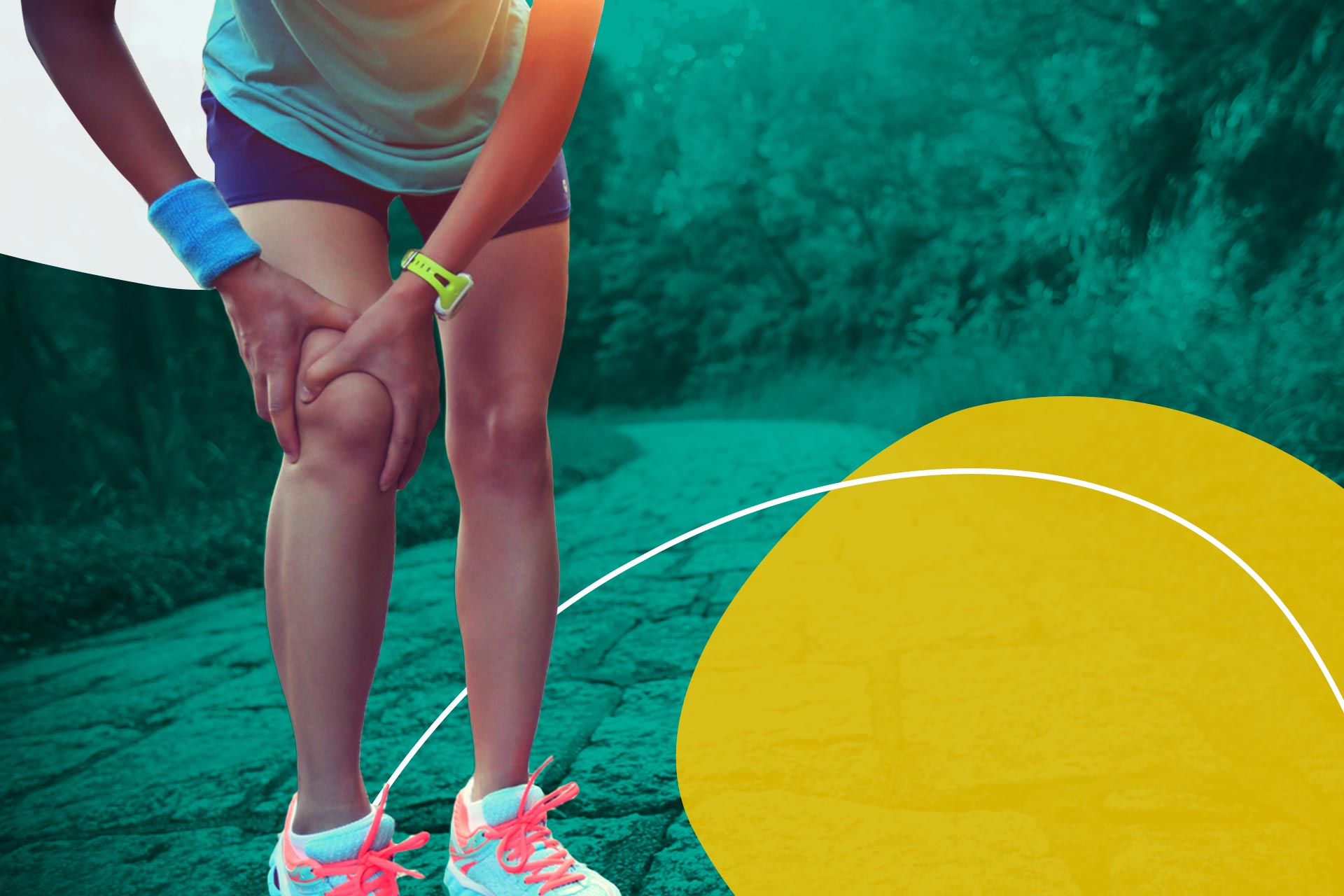
Body + Mind is reader-supported. We may earn an affiliate commission when you buy through some of the links on our site.
Few things strike horror into the hearts of runners more than knee pain. “Why does my knee hurt when I run?” is a question that causes terror. Visions of confining yourself to walking start to haunt you, even during the daytime. Some diehard folks put off seeking care longer than they should out of fear of getting put on the disabled list.
However, if you want to keep running well into your sunset years, you need to listen to your body and pinpoint your ache source. Many conditions resolve themselves with little more than adequate rest. Even if your injuries require surgical intervention, the earlier you start treatment, the better your chances for a full recovery.
This condition, also known as “jumper’s knee,” occurs when your patellar tendon becomes inflamed from overuse. While logging too many miles can trigger it, so can cross-training activities like HIIT classes that involve moves like box jumps. The pain from this ailment can wake you up at night — but it is treatable.
The recipe for healing patellar tendonitis involves resting the injured limb and using NSAID pain relievers and ice packs to reduce swelling. As you begin healing, work back into your routine gradually by performing low-impact moves. You can strengthen the muscles around your knee by performing leg extensions with light weights.
While patellar tendonitis inflames the tendon that attaches your kneecap to your lower leg, runner’s knee affects those that connect to the femur. The symptoms are similar, although runner’s knee tends to be more dull and achy than sharp. As this ailment tends to recur, the best long-term remedy involves strengthening your quadriceps and keeping your hamstrings flexible.
Your menisci are two large, C-shaped pieces of cartilage on top of your tibia, one of your lower leg bones. Because these formations allow your knee to glide when you end your leg, damage can result in significant pain. Usually, a sudden stop or twisting motion causes the injury, but deep squats or kneeling with heavy weight can also cause tears.
The risk of meniscus tears increases as you age as your cartilage starts to deteriorate over time. While some such injuries heal with rest and stabilization, other cases require surgical intervention.
Do you have pain along the side of your knee that gets worse when you go downhill? You could have iliotibial (IT) band syndrome. This injury results from overuse and symptoms typically develop after a grueling workout. You may feel an audible snapping sensation as the band flicks over the tips of your bones. Experts recommend rest and either ice or heat for pain relief, but methods like ultrasound therapy can help those with persistent cases.
If you have any of the various forms of arthritis, you could experience knee pain when you run. Osteoarthritis frequently occurs in individuals over 40, while the rheumatoid variety can strike at any age, but it’s most common between 30 and 50. Your physician can diagnose you based on blood test and X-ray results. While arthritis has no cure, physical movement often eases symptoms when you follow a moderate training program. ‘. Your physician can diagnose you based on blood test and X-ray results. While arthritis has no cure, physical movement often eases symptoms when you follow a moderate training program.
Your joints have small, fluid-filled sacs surrounding them called bursae. When these become inflamed, bursitis results. This condition is treated through adequate rest, although you might suffer recurring bouts throughout your running career. You might ease some discomfort if you maintain a healthy weight and practice correct form when lifting heavy objects.
Like other dislocation injuries, when this condition occurs to your patella, you can determine severity by the degree of impairment. Sometimes, your knee may become stuck in a bent position if the kneecap moves to the outside. You may need to wear a brace if you are prone to this type of injury. Severe cases can require reconstructive surgery.
If you experience knee pain during or after a run, seek medical treatment if the problem persists or becomes severe. You might not relish the thought of resting for a few weeks, but it’s better than spending the rest of your life on the bench. Your knee hurts when you run, but that isn’t the end of the story. Find out the reason behind why your knee hurts when you run, and you’ll be able to treat it that much better.
Your email address will only be used to send you our newsletter, and at any time you may unsubscribe. For more information, see our Privacy Policy.